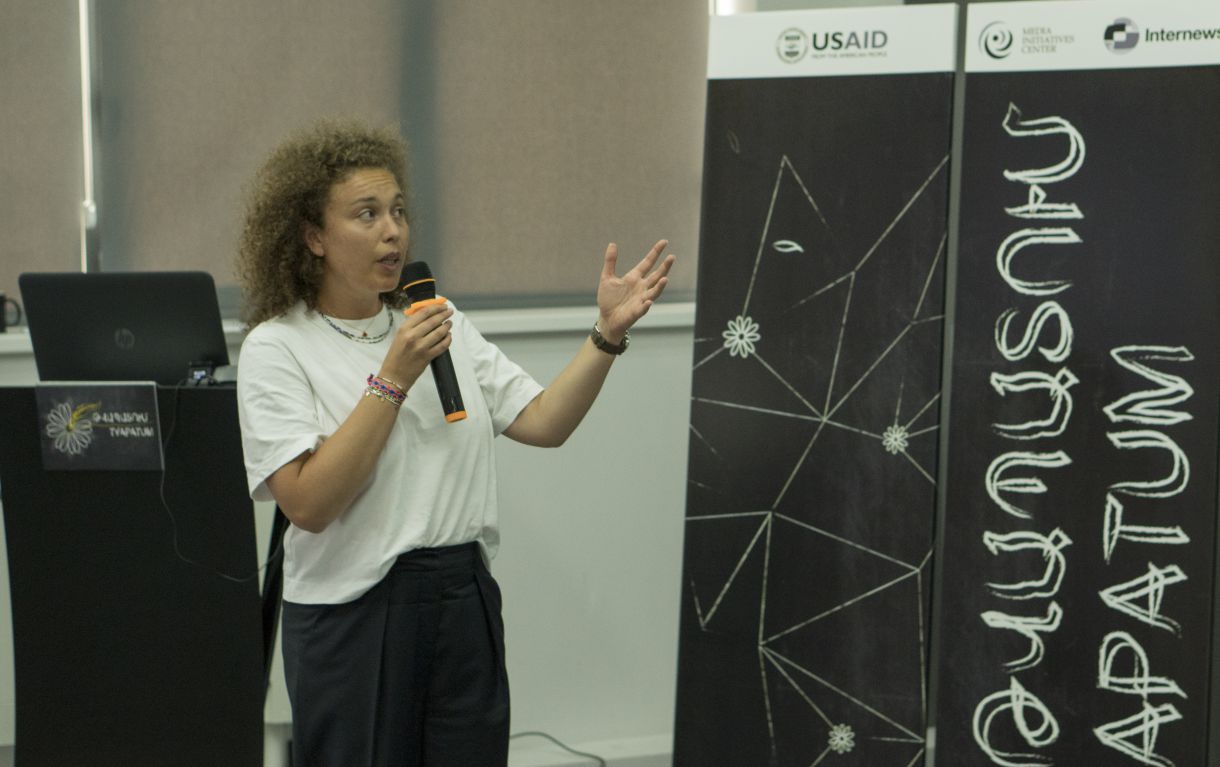
The International Committee of the Red Cross has begun to publicize its activities using both traditional media and social networks. It does so, mainly with exciting stories about people that are above nationality, religion, and principles, since humanity is universal.
Nora Livet is the organizations digital communications professional. At the DigiStory Conference, she explained how, after a multilateral discussion, they decided to cooperate with the media, give them the opportunity to see their work and results from close up.
In fact, as Nora admits, it’s difficult to attract journalists with some periodically interesting stories, since the media’s expectations, working language and goals are different.
International, non-profit, as well as charity organizations have a problem with working with media and building long-term relationships. The International Committee of the Red Cross has found some ways, but Nora says that daily work is needed in order to strengthen the connections with the media.
“Our organization is too neutral, we are outside of politics, we do not take any sides of a conflict or aren’t part of any political side, therefore, we need to be extra careful in our stories. We tell stories based on only facts,” she said.
According to our interlocutor, the issue of giving content to a journalist is always relevant, especially if it isn’t that interesting or exciting, a big effort is placed into packaging it.
The story, according to our interlocutor, must be exclusive and have concrete messages for the media. “Our stories are interesting because only we have the opportunity to create them. Different sides of the conflict have their interests and maybe stories. The parties do not have the opportunity to know the human stories, feelings and emotions of the other side.”
According to Nora, press releases are not interesting, they are boring for journalists, that’s why they make journalists a part of the human stories, enabling them to enter into the daily lives of the subjects, to meet with their families.
“We ask the journalists what they want to cover, which can be literal. They help them build their stories, provide them with our photos Perhaps this is the new part of our work,” adds the specialist in digital communications.
She talks about how sometimes journalists immediately begin to politicize the scene. Anyways, according to Nora, this is their choice. “We give journalists freedom, it is the risk of the organization, but there is no solution. We must take a step ahead of our policies and open roads for the media field. A the moment we have created such a possibility for National Geographic to photograph women from conflict countries. We have no idea what the results will be.”
According to her, in all coverage, the person should be the main actor, with their sincerity and their problems. Without the media’s political motto. Journalists, as she’s noticed, should bring back emotions from the sene.
“Most importantly, the story of a person shouldn’t be told, let them do it,” Nora summarizes.
For the International Committee of the Red Cross it is not important to be mentioned in people’s stories, they help to get people’s stories published. In the cases of politics or other tones, they try to step back, even though it helps to open the information.
Nora says they do not give journalists ready made videos, they have a special section on the site where their videos, photos and articles are open to the media.
Gayane Asryan


Add new comment
Comments by Media.am readers become public after moderation. We urge our readers not to leave anonymous comments. It’s always nice to know with whom one is speaking.
We do not publish comments that contain profanities, non-normative lexicon, personal attacks or threats. We do not publish comments that spread hate.